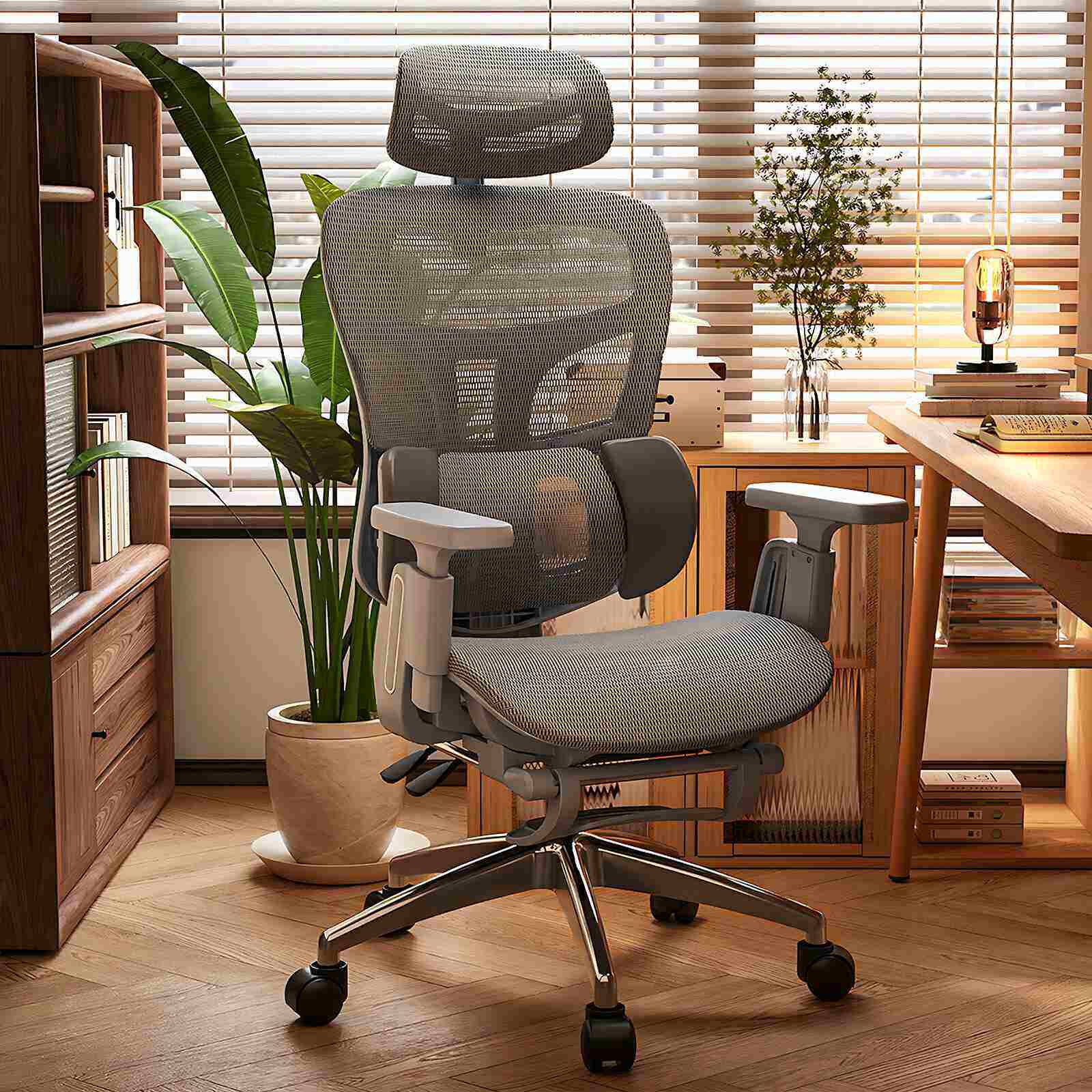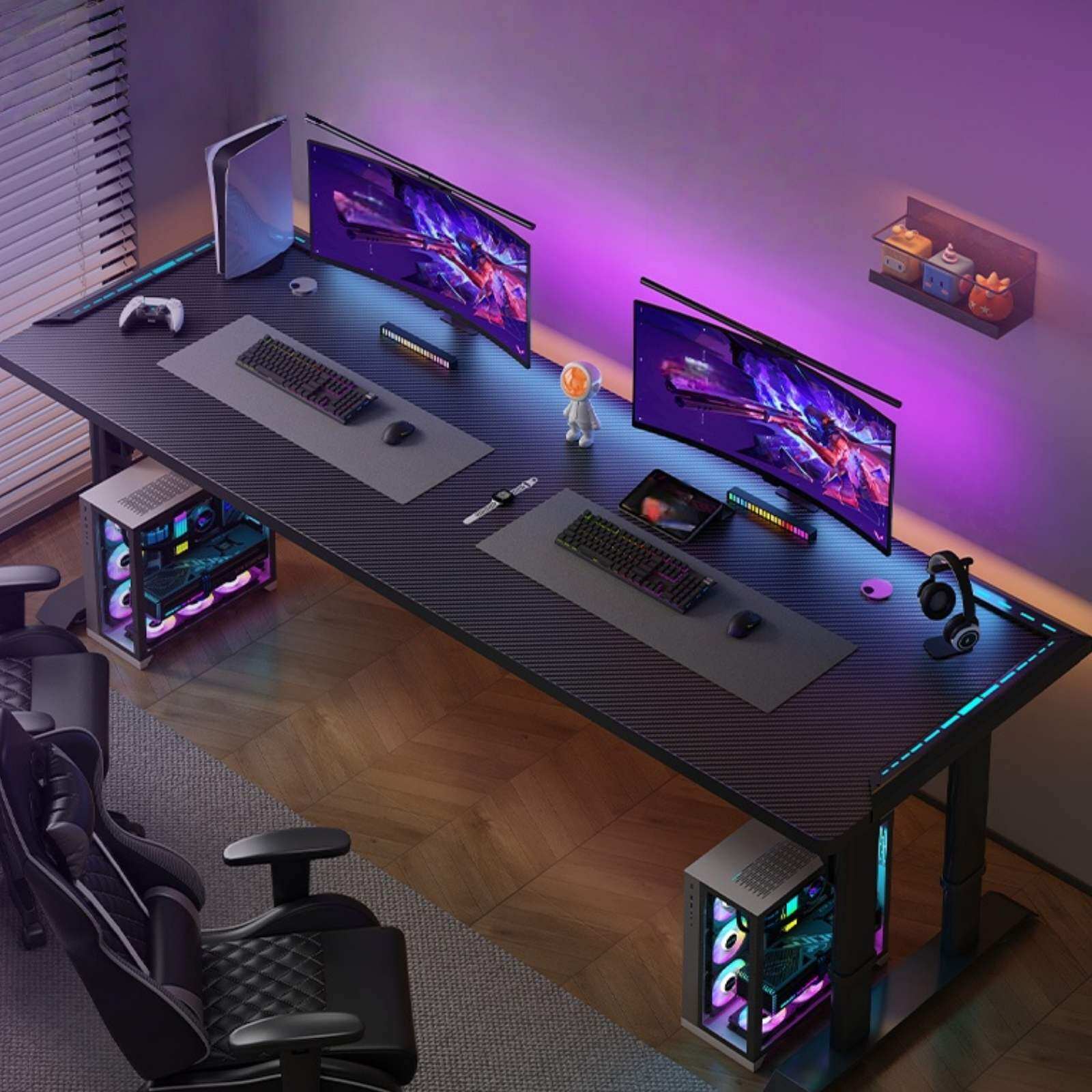01
Building an Ideal Study
Imagine a perfect study—one that not only houses your books and office supplies but also provides a comfortable space where you can immerse yourself and unwind. To achieve this ideal environment, ergonomics is crucial. This involves the appropriate sizing of furniture, strategic layout, and a pleasant environment, ensuring that the space truly serves you, rather than you adapting to it. Below, we'll delve into several key elements of creating such a comfortable study.
02
Furniture Selection
❒ Desk Size and Selection
A comfortable study begins with carefully selected furniture. The ideal desk height should be between 72 and 76 cm, with a surface depth of at least 60 cm, to support good posture and productivity. This height ensures that when sitting upright, the forearms can rest naturally, with the elbows bent approximately 90 degrees, allowing them to rest comfortably on the surface, avoiding hunching or slouching caused by improper posture. The depth and length of the desk are also factors to consider. The desk should be at least 60 cm deep, and the length should range from 1.2 to 1.8 meters, depending on individual needs. For two people, a deeper desk, such as 70-80 cm, is recommended to ensure ample space for a computer, books, and writing.
❒ Ergonomic Chair Design
Choosing an ergonomic chair is key to comfortable, extended sitting. The chair's height and depth should be designed to fit the human body, supporting the thighs and spine, while the armrests help reduce shoulder strain. The chair's seat height should be adjusted so that the feet can rest flat on the floor and the calves are naturally vertical. This height is typically set between 40 and 45 cm, or the height of the bony protuberance behind the knees (fibula) when seated. The seat depth should be moderate, supporting approximately two-thirds of the thigh area, while ensuring a gap of about two finger widths between the back of the knees and the front edge of the chair to avoid compressing leg nerves. The chair back design is equally important; it must conform to and support the curve of the lumbar spine. Chair backs with adjustable height typically range from 45 to 55 cm to better accommodate different body shapes. Armrests are also crucial, providing effective elbow support and reducing shoulder strain.
❒ Storage Space Planning
Storage planning is crucial for efficiency and comfort. For easy access, frequently used books and items should be stored in the optimal area between waist and eye level, approximately 90 to 150 cm, making them easily accessible. The depth of the bookcase should also be considered; a depth of 30 to 40 cm is generally sufficient for most books. Combining open and closed storage concepts allows for convenient access and organized storage in bookcase design. Bookcases with adjustable shelves offer flexibility, allowing items of varying sizes to be conveniently accommodated.
03
Space and Environment Design
❒ Study Room Functional Zoning and Lighting
After carefully arranging the furniture, we need to further optimize the spatial layout and pay attention to environmental details to create a more comfortable reading and working environment. A study room should have clear zones, such as work, reading, and rest areas. Furthermore, utilizing natural light to enhance comfort is crucial. The desk should be placed as close to a window as possible. The desk should be placed close to the window, with adequate space for movement, to create a "negative distance" effect, enhancing comfort and avoiding a sense of crowding.
❒ Color and Material Selection
Visual perception has a profound impact on psychological well-being. To create a calm and focused atmosphere, choose neutral tones such as off-white and light gray as the primary color palette for the study room. The choice of furniture material is also crucial. The warm touch of solid wood combined with the transparency of glass creates a beautiful and practical design while also meeting the requirements of durability and easy cleaning.
❒ Acoustics and Temperature and Humidity Management
Acoustics and temperature and humidity management are crucial for creating a quiet and comfortable work environment. Using sound-absorbing materials and regulating temperature and humidity can enhance concentration. Using sound-absorbing materials such as thick curtains and carpets can effectively reduce external noise disturbances and ensure a tranquil study room. Maintaining an appropriate temperature and humidity range—between 20-25°C and 40-60% humidity—is also crucial. This environment not only promotes physical comfort but also helps maintain focus and improves work efficiency.
04
Special Focus
❒ Children's Study Design
When designing a study for a child, adjustable furniture is particularly important. Using adjustable furniture ensures that children maintain a correct sitting posture, which is beneficial for their physical and visual health. Specifically, this means ensuring that when a child sits, their thighs are horizontal and their feet are firmly planted on the floor (if this is not possible, a footrest can be provided). Also, a distance of 30-35 cm between their eyes and the book is maintained to maintain healthy vision.
❒ Problems of Prolonged Sedentary Life and Solutions
Even in a meticulously designed children's study, prolonged sitting can be detrimental to a child's healthy development. It is recommended that children get up and move around for a short while every 30 minutes to relieve the discomfort of prolonged sitting.
❒ Application of Smart Technology
Modern technology has brought numerous conveniences to our lives. For example, electrically adjustable desks allow us to easily switch between sitting and standing positions to meet different work needs. Memory chairs remember our favorite sitting positions and can be quickly restored with a single click. Furthermore, automated lighting systems automatically adjust brightness based on ambient light levels, enhancing work comfort while also saving energy.
05
Summary and Key Points
❒ 1. Dynamic Adaptation Principle
The core of study ergonomics lies in "dynamic adaptation," which encompasses the following key points: First, furniture dimensions must precisely correspond to the user's body measurements. In particular, the height difference between the desk and chair directly determines a comfortable sitting posture. Second, environmental design must comprehensively consider both physiological and psychological needs. Light, sound, temperature, and color all contribute to a pleasant and productive work environment. Furthermore, flexibility is crucial to accommodate diverse usage scenarios, such as work, reading, children's development, and shared use, as well as individual differences. Ultimately, the criterion for evaluating the effectiveness of a study layout lies in individual physical sensations. Through continuous optimization, we can create a workplace where you can sit for a long time without feeling tired and where you can get endless inspiration.

 USD
USD
 GBP
GBP
 EUR
EUR

























































